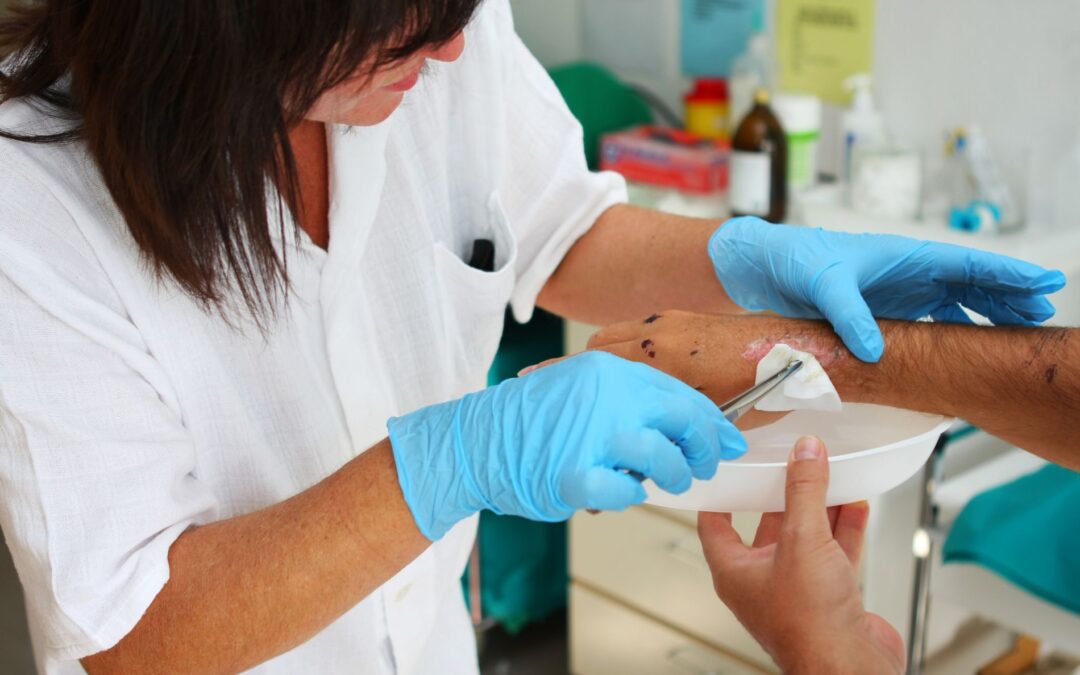Keeping a wound clean is one of the most important parts of how it heals. When a wound is left untreated or not properly cleaned, everything from infection to long-term skin damage becomes more likely. Time matters when it comes to recovery, and the way a wound is handled early on can change how fast someone gets back on their feet. It’s not just about slapping on a bandage and hoping for the best. Professional care, especially when focused on cleaning and maintaining the site, gives the body a better shot at healing right.
In places like Brentwood and the rest of the Nashville area, people are looking for safe, smart ways to take care of wounds without always having to step into a clinic. That’s where mobile care really stands out. Instead of risking travel or long waits, patients can get quality help right where they are. Wound cleaning on a professional level, done by specialists who know what to look for, is targeted and timely. It’s built around what the wound needs to move forward.
Professional Manual Cleaning Techniques
Manual cleaning might sound simple, but there’s a lot more to it than just wiping a wound with gauze. This method uses sterile tools and solutions to gently remove debris, bacteria, or anything that might block progress. Professionals examine the wound’s size, shape, and condition before cleaning even begins. Every movement matters. The pressure, angle, and equipment used can either speed up healing or slow it down.
Manual cleaning is most useful when:
– A wound is fresh and needs early attention
– A dry dressing has to be changed without harming surrounding tissue
– There’s only light debris that can be cleared without forceful methods
– It serves as prep for another type of treatment
Training makes a major difference here. It’s easy to do more harm than good without the right technique. A provider might flush a wound with saline, then use soft gauze to lift out loosened debris. Done too lightly, harmful material stays behind. Done too hard, healthy skin is injured, setting healing back. That’s why expert care matters.
Picture a patient in Brentwood recovering from minor foot surgery. Walking is tough, and getting to a clinic is even tougher. A mobile nurse arrives at the home, checks vital signs, gently removes the dressing, and uses sterile tools to clean the wound. That personal visit keeps things from getting worse and helps move recovery along at a steady pace.
Benefits of Chemical Cleaning Agents
There are times when a rinse isn’t enough. That’s when professionals lean on chemical agents designed to clean deeper without damaging the skin. These medical-grade products come in gels, sprays, and ointments. They help break down dead tissue, clear out bacteria, and protect the healthy areas underneath.
Chemical agents are typically used when:
– There are signs of infection, such as odor, pus, or strange coloring
– Manual techniques haven’t helped much
– The wound is large or deep
– Staff need to soften a tough scab before moving forward
These cleaning solutions are not the same as household antiseptics. They’re made to be safer and more supportive for delicate areas. Providers use just the right amount and watch closely for how the wound responds. Often, they apply the chemical and wait a bit before placing a dressing that helps lift the dissolved tissue.
This process doesn’t usually cause pain and lowers the risk of spreading bacteria. Done right, it can help wounds stay cleaner longer. In a home setting, a trained provider can treat even sensitive or infected areas with care using these powerful, yet skin-safe agents.
Mechanical Debridement for Stubborn Wounds
If a wound hasn’t improved over time or has thick tissue buildup, mechanical debridement may be needed. This method uses gentle pressure and special tools to remove dead or infected tissue. It’s more forceful than manual cleaning and best for wounds that are stuck in the healing process.
Common tools include:
– Moistened dressings or gauze pads
– Irrigation with pressurized water
– Scrub tools specially made for wound care
Mechanical debridement works best on:
– Long-term wounds that won’t heal
– Pressure ulcers that stay deep
– Areas with thick or crusty buildup
– Prepping wounds for new treatment steps
In Nashville, patients who can’t get to a clinic benefit from this kind of care right in their homes or local facilities. For example, a person with a lower leg ulcer might not respond to dressing changes alone. A care provider may gently scrub using a moistened sponge to remove tough layers. This opens the wound up for healing and reduces infection risk.
The key is knowing how much pressure to apply. When done properly, it supports recovery and avoids setbacks. In a home visit, this targeted cleaning can replace anxiety with progress.
Soft Touch Approaches: Autolytic and Enzymatic Cleaning
Sometimes, force is not the best way forward. Autolytic and enzymatic cleaning focus on letting the wound clean itself with a little help. Autolytic methods use the body’s own fluids, locked in by special dressings, to soften and break down damaged tissue naturally. Enzymatic methods apply gels that do a similar job but work a bit faster.
These gentle methods are used when:
– A wound isn’t showing infection
– Scrubbing techniques are too painful
– The skin around the wound is sensitive
– Providers want to manage the buildup between visits
These approaches take more time than other types of cleaning, but they’re easier on the body. Moisture-locking dressings keep the wound damp enough to soften old tissue. Once it lifts away, new skin has space to grow. This kind of plan makes sense for smaller or sensitive wounds that don’t need aggressive treatment.
In Brentwood, a patient with a diabetic foot ulcer might benefit from this. A nurse stops by regularly, checks the dressing, and tracks changes. Slowly, the wound shrinks with fewer risks of reopening or infection. It shows how slower methods can lead to steady progress when handled correctly.
Why Mobile Wound Cleaning Makes a Difference
Getting professional wound care no longer means driving across town or waiting in a busy clinic. Mobile wound services bring trained experts to the spaces where healing happens. That could be a home, a long-term care center, or another familiar setting.
Benefits of mobile wound care include:
– Reduced stress from traveling
– Easier scheduling that fits daily life
– Access to specialized equipment during every visit
– Immediate updates and care decisions are made on-site
This convenience is more than a bonus. For many dealing with serious wounds, it’s the safest way to get help. Providers can clean, treat, and adjust care plans in real time. Follow-ups happen quicker, and subtle changes in the wound’s look or feel are addressed without delays.
In Nashville, mobile care lets people focus on getting better right where they’re most comfortable. Every treatment is planned around what the wound needs in the moment. From easy dressing swaps to more complex debridement methods, mobile visits match patient needs without making them leave home.
Choosing mobile wound care with trained providers means fewer interruptions in recovery. When things take a turn, the response is quick. When things go smoothly, routines stay on track. For patients across Nashville who just want to heal without hassle, this option often makes all the difference.
Feel the difference personalized care can make in your healing journey. If you’re in Brentwood or nearby and need wound debridement services in Nashville, Southern Wound Care provides expert in-home treatment designed around your comfort and recovery. Let us help you stay on track with attentive mobile care that comes to you when it matters most.




